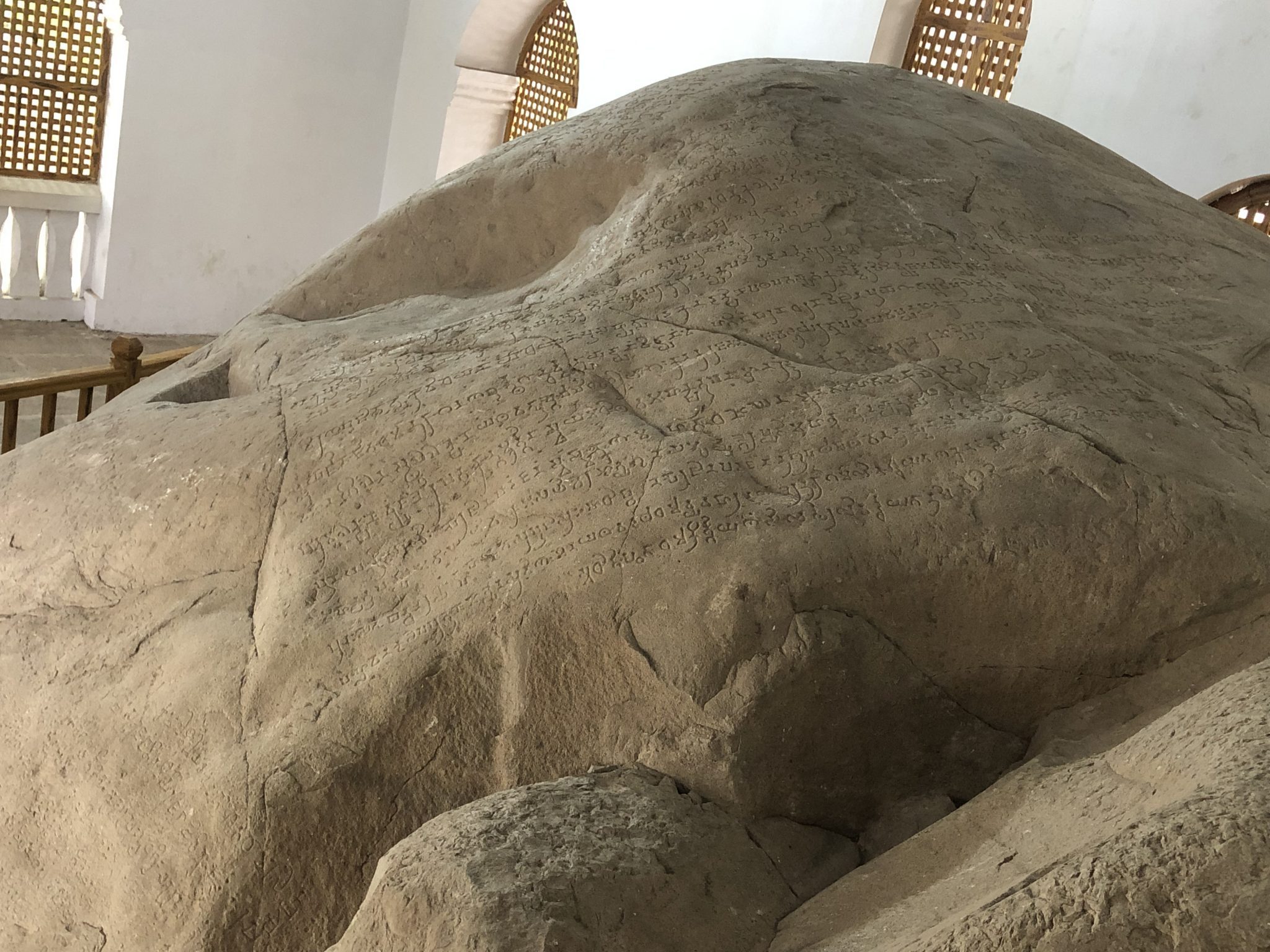Short Answer
The available evidence for hospitals set up on the orders of Ashoka is not conclusiveinconclusive, but several scholars have suggested that it is at least likely that there was some type of hospital, perhaps within a Buddhist monastery. Details, though, are patchy at best and more definite evidence of the scope of care of monasteries comes from much later periods.
Details
The main evidence for the provision of medical treatment comes from what are now known as the Rock Edicts, specifically Major Rock Edict (RE) 2. However, translations differ slightly. Wikipedia uses E. Hultzsch's 1925 translation:
Everywhere in the dominions of king Devanampriya Priyadarsin [generally interpreted to mean Ashoka] and (of
those) who (are his) borderers, such as the Cholas, the Pandyas, the
Satiyaputa, the Kelalaputa, Tamraparni, the Yona (Greek) king
named Antiyoga (Antiochus), and the other kings who are the neighbours
of this Antiyoga, everywhere two (kinds of) medical mentwo (kinds of) medical men were
established by king Devanampriya Priyadarsin, (viz.) medical treatment
for men and medical treatment for cattle.
Wherever there were no herbs beneficial to men and beneficial to
cattle, everywhere they were caused to be imported and to be planted.
Likewise, wherever there were no roots and fruits, everywhere they
were caused to be imported and to be planted.
However, therethe source from which Wikipedia took the above translation does not use the words in bold above; what actually says is two (kinds of) medical
treatment.
There are more recent (and seemingly more widely used) translations which are worded a little differently. The one below is by Ven. S. Dhammika (who also consulted the translations of C. D. Sircar and D. R. Bhandarkar):
Everywhere within Beloved-of-the-Gods, King Piyadasi's domain, and
among the people beyond the borders, the Cholas, the Pandyas, the
Satiyaputras, the Keralaputras, as far as Tamraparni and where the
Greek king Antiochos rules, and among the kings who are neighbors of
Antiochos, everywhere has Beloved-of-the-Gods, King Piyadasi, made
provision for two types of medical treatmenttwo types of medical treatment: medical treatment for
humans and medical treatment for animals. Wherever medical herbs
suitable for humans or animals are not available, I have had them
imported and grown. Wherever medical roots or fruits are not available
I have had them imported and grown. Along roads I have had wells dug
and trees planted for the benefit of humans and animals.
Note that Hultzsch only refers to 'medical men' while Dhammika has 'medical treatment for humans'.
"First and second Rock-Edicts: Girnar. Source: 'Inscriptions of Asoka. New Edition by E. Hultzsch'
An earlier (but updated) translation by V. A. Smith has 'healing arrangements'. Note also that these edicts apparently post-date Ashoka's conversion to Buddhism, and that the welfare of animals is not neglected.
As you have noted in your research, this has been widely interpreted to mean 'hospitals'; references touses of this word can found in several academic texts: Richard Salomon's Indian Epigraphy (OUP, 1998), Charles Allen's Ashoka: The Search for India's Lost Emperor (Hachette, 2012) (favourably reviewed here) and Nayanjot Lahiri's Ashoka in Ancient India (Harvard, 2015), the last source commenting:
However, according to a footnote Hultzsch's book, Indian archaeologist and epigraphist D. R. Bhandarkar specifically rejects the use of 'hospitals'. Also, Kenneth Zysk in Ascetism And Healing In Ancient India Medicine In The Buddhist Monastery (1991) is more cautious, but suggests that some kind of hospital care may have been provided by monasteries:

